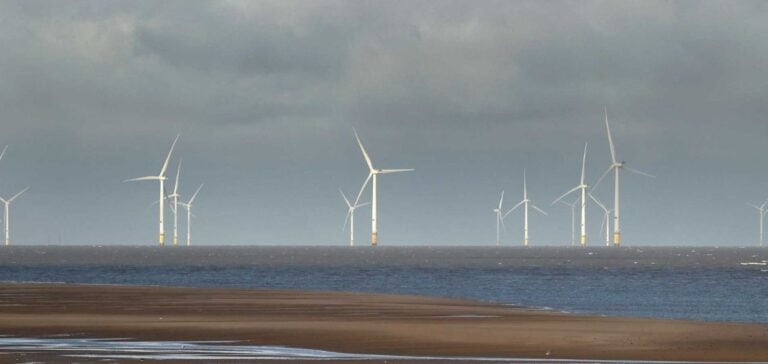The offshore wind farm in the Bay of Saint-Brieuc, Côtes-d’Armor, goes into service. Iberdrola, the manufacturer and operator, announced this Tuesday morning that the 62 Siemens Gamesa wind turbines, each rated at 8 megawatts (MW), are now connected to the power grid. These wind turbines, the most powerful ever installed at sea in France, are expected to generate a total of 1,820 gigawatt-hours (GWh) per year, equivalent to 9% of Brittany‘s electricity consumption. This production supplies more than 800,000 inhabitants with electricity.
Context and challenges of offshore wind power in France
The commissioning of this wind farm represents a significant step forward for France, which is lagging behind in its ambitions for offshore wind power. France’s first offshore wind farm, located off Saint-Nazaire, will not be connected until 2022, a decade after the contract was awarded. The Fécamp wind farm in Normandy, inaugurated on May 15 by Industry Minister Roland Lescure, is due to go into full operation shortly. France is aiming for an installed capacity of 18 GW in 2035 and 45 GW in 2050, but currently only six wind farms, including Saint-Brieuc, represent a total capacity of less than 3 GW.
Investments and technologies
Total investment in the Saint-Brieuc wind farm amounts to 2.4 billion euros, entirely financed by Iberdrola. This is the fourth park to be built by Iberdrola worldwide, after West of Duddon Sands, Wikinger and East Anglia One. The Spanish manufacturer is also pursuing the construction of several other projects, including East Anglia 3 in the UK and Vineyard Wind 1, the first offshore wind farm in the USA.
Outlook and future development
To accelerate the development of offshore wind power, several calls for tender are underway, notably for floating wind power, a promising technology that will enable the installation of wind farms further offshore. In September, a map of “favourable zones” will be published, following a debate involving various stakeholders, including fishermen and environmentalists. In addition, a prefectoral decree is expected to allow fishing activities to resume in the Saint-Brieuc area.
Environmental and social issues
The construction of offshore wind farms has given rise to debate, particularly concerning the impact on marine wildlife and fishing activities. In Saint-Brieuc, the return to normal fishing activities is a priority, and Iberdrola indicates that a prefectoral decree should soon be issued to this effect. Dialogue with local stakeholders remains crucial to ensure the harmonious and sustainable development of renewable energies.
The Saint-Brieuc wind farm marks a significant step forward in France’s energy transition, offering substantial renewable electricity generation capacity. As the country pursues its ambitious goals for offshore wind power, collaboration with a variety of players and the development of new technologies will be key to making this transition a success.






















